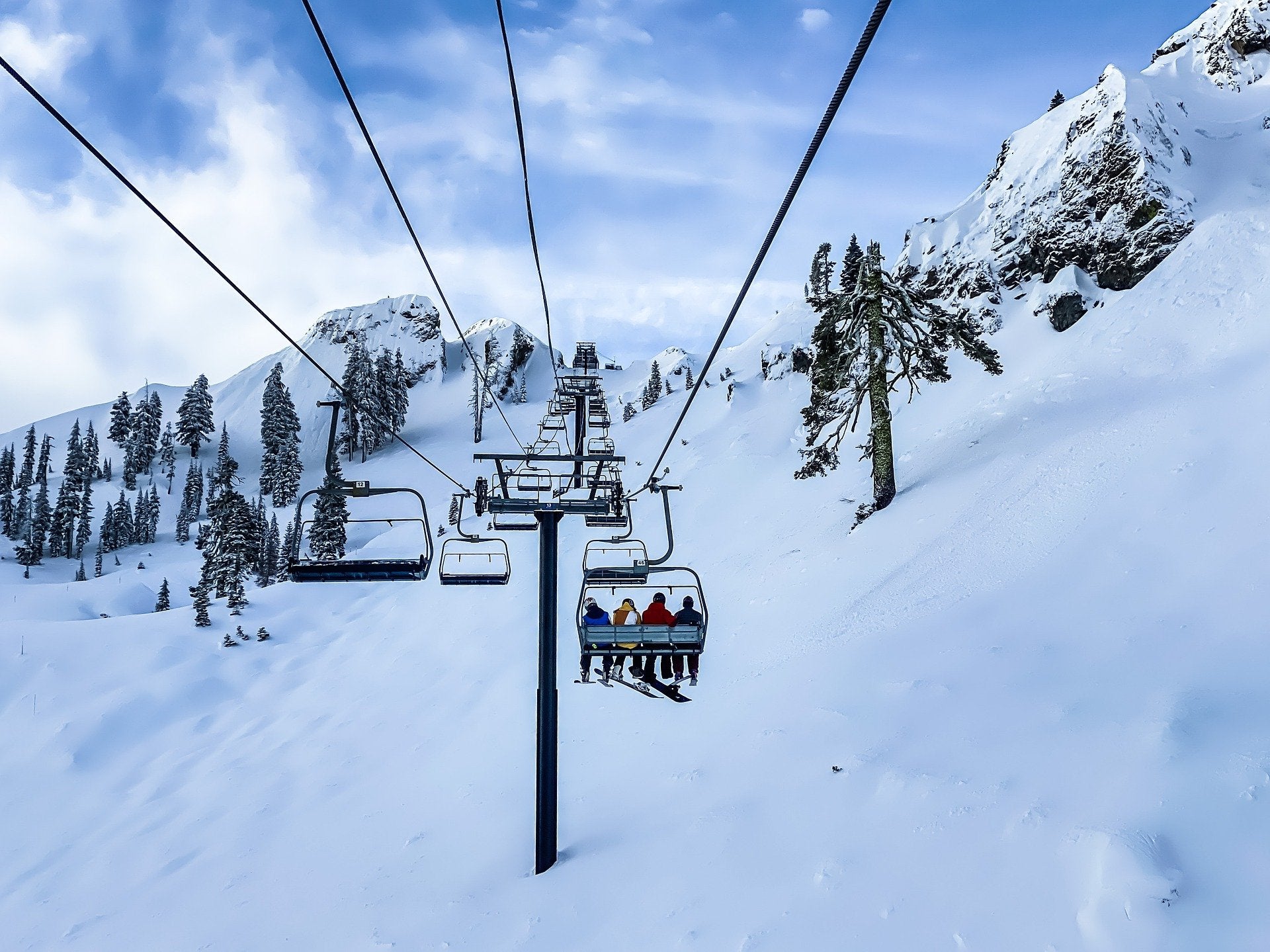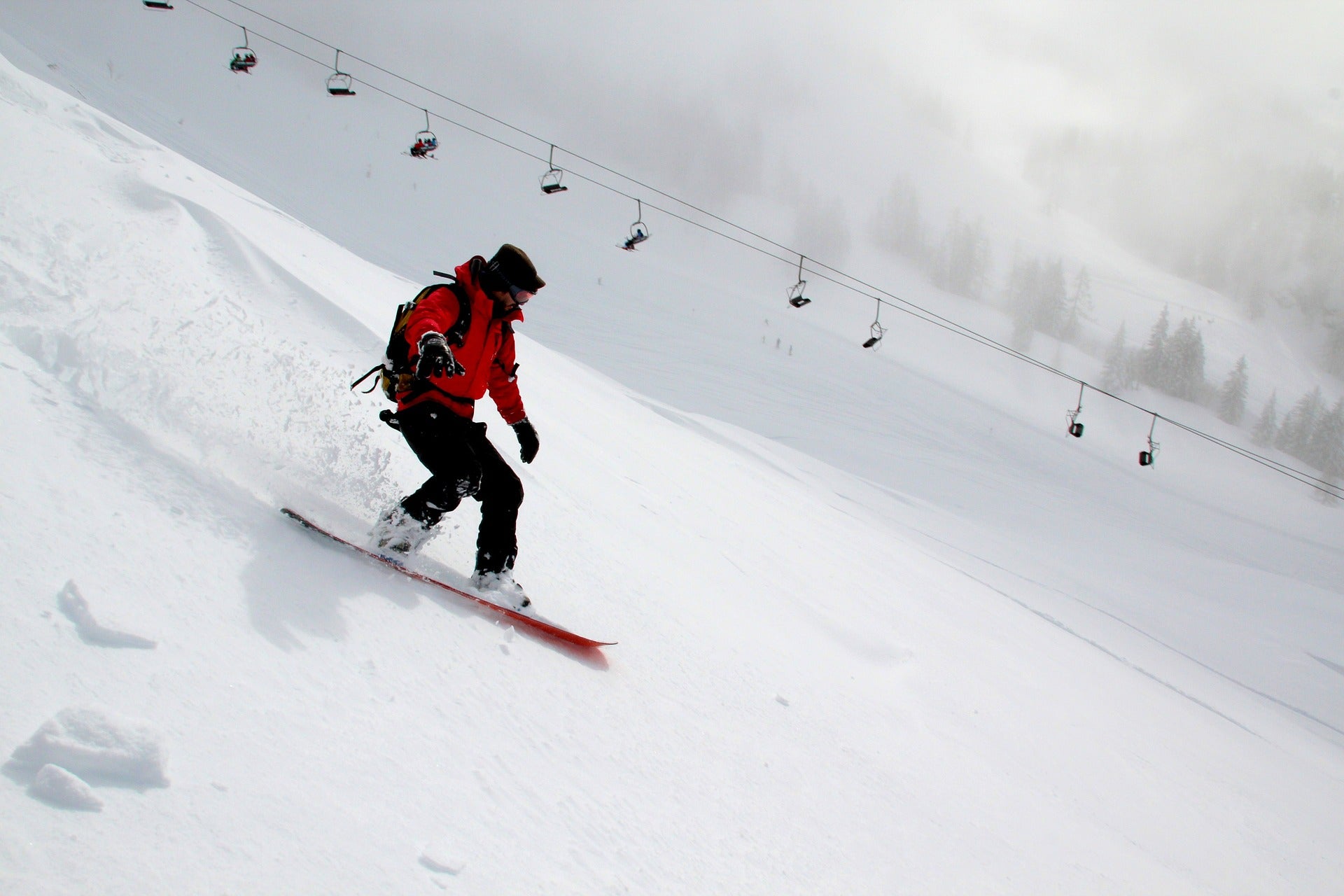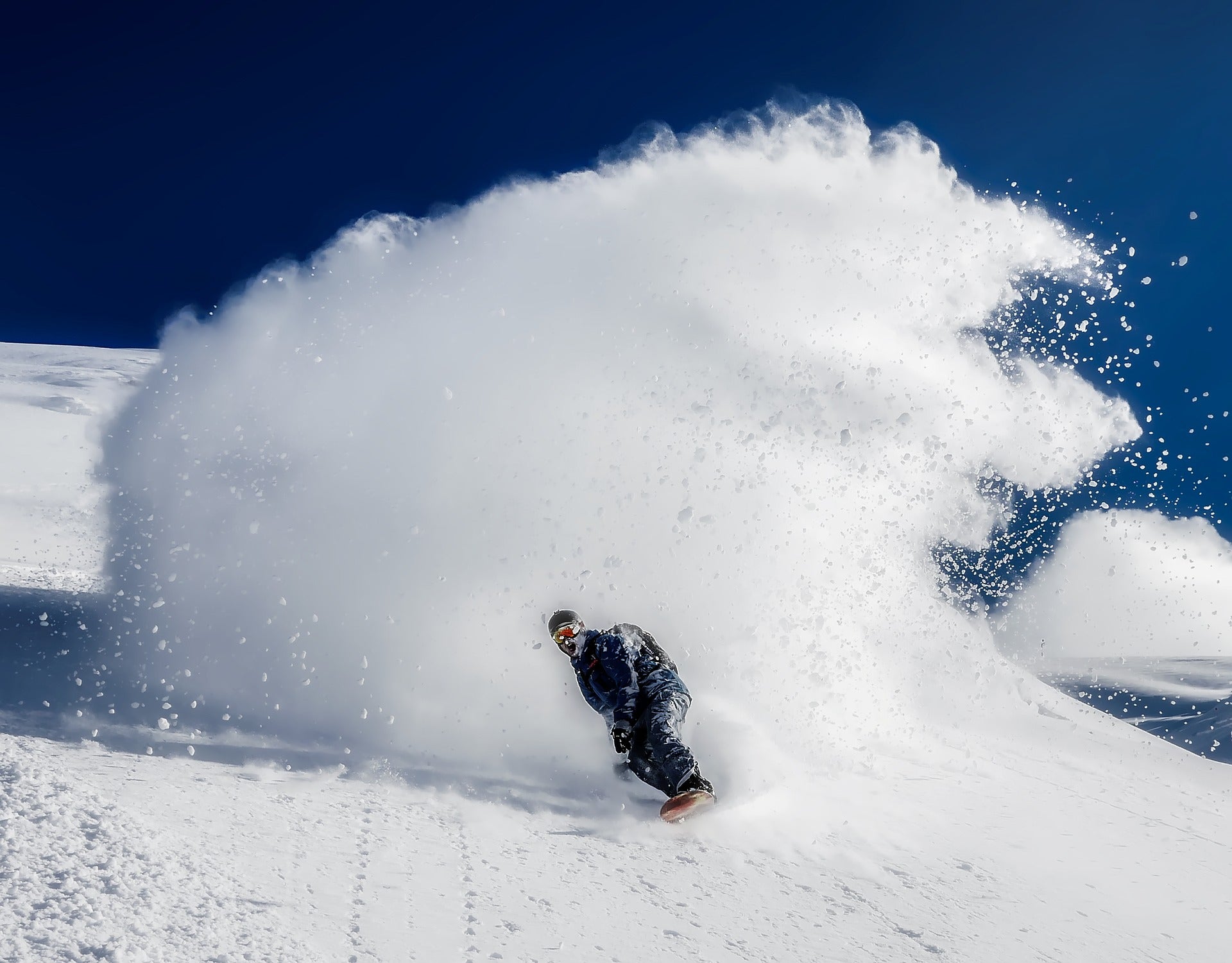What belongs in the snowboard backpack

What belongs in the snowboard backpack?
Every hiker knows the discomfort of back pain, stabbing shoulder pain, and tense neck, which can really ruin your enjoyment of the tour. The right packing strategy ensures that the backpack is adjusted correctly so that your backpack is perfectly tailored to your body inside and out. In this article we will give you important tips on how to pack and adjust your backpack correctly so that you get the maximum comfort out of your backpack!

Why is it so important to pack your backpack correctly?
For safe and stable movement, especially on challenging terrain, you need a correct center of gravity. Jumping from rock to rock in boulder fields, or crossing a river or easy climbing requires a good sense of balance, which can throw you off balance if you make a mistake while unpacking from your backpack. A properly packed and adjusted backpack is easier to control and ultimately you should be the master of your backpack. Packing your backpack correctly is not just about true comfort, but also about the feeling of security.
The most important tips for packing your backpack
The motto is to pack systematically! Because your ideal body swing is related to proper balance and control. If you don't set this up well beforehand, you'll just struggle with your own backpack and lose valuable energy. It is also extremely uncomfortable. If you pack too many heavy items at the top of the backpack, the backpack will rock uncomfortably back and forth on your back. If these are packed too far out, there is a risk of tipping over at the back and if the heavy things are too far down in the backpack, you put enormous strain on your body.

This is why it is very important to pack the heaviest items on your upper back, as this will adjust the center of gravity of the backpack so that it is not too far away from your own center of gravity. For example, the provision bag with cereal and milk powder, the tent or your camera are the heavy equipment.
Light objects, a sleeping bag or a pair of shoes belong in the bottom compartment. Equipment that is medium-heavy, such as clothing, is packed in the middle and away from the back, while your small items find space in the top lid compartment and also in the side pockets. Light equipment also helps to pack the heavy equipment around so that it stays stabilized and nothing can slip inside.
For smaller daypacks under 30l. You have to be less meticulous because they are not intended for high loads in order to prevent a negative influence on the body's center of gravity.

10 short tips at a glance
- The size of the backpack should fit the tour.
- Good equipment preparation: What do you really need?
- Light equipment belongs in the bottom compartment.
- Medium-heavy equipment goes outside.
- Pack heavy items as close to your body as possible.
- Use the lid compartment for what you need frequently.
- The loading weight should be a maximum of 25% of your body weight.
- Make sure the load is distributed with balance.
- Make organizing easier with packing bags.
- Extra tip: Strengthen your back muscles regularly!

The correct adjustment of the backpack
What are all the straps and buckles on the backpack used for? Is it pointless dangling? With a little experience you will also find that all adjustment options can be useful aids to comfort. The smallest helpers are the shoulder straps, where every backpack has certain adjustment options that allow you to keep the backpack sitting properly on your shoulders so that it doesn't slip down.
The hip belt or, in the case of backpacks with more volume, the hip fins should not be underestimated either. If it fits correctly, you can greatly reduce the load on your shoulders, which is particularly noticeable on tours with heavy luggage. The hips are actually supposed to bear the majority of the weight. It can usually be shortened or lengthened a little with additional straps. A chest strap, on the other hand, is particularly helpful if you are, for example,b are traveling with trekking poles. It ensures more freedom of movement for your arms in front of your body and completely stabilizes your backpack.

Often overlooked are all the load control straps that form a connection between the shoulder straps, the top and the backpack. When they are attracted, the so-called Load angle is reduced and you bring the backpack closer to your body. This means it rocks less and sits more stable. But even the best setting can be of no use if the back length is not chosen correctly. This can be recognized by the attachment of the shoulder straps, which lies directly between the shoulder blades, while the hip belt sits optimally on the hip bones. If the shoulder straps hover over the shoulder blades or are too short, you should adjust the back length using the adjustment system.
How do I pack my snowboard backpack?
On a snowboard tour it is very important to save as much weight as possible. That's why the equipment needed in the field is becoming lighter and lighter every day. But it's not just the weight that plays a role, but also how you distribute all the weight in the backpack. So imagine your backpack as your little shelf with lots of places and compartments for the different items you should have with you on the tour. Each item has its own, special and well thought-out place in your “backpack shelf” so that the weight is well distributed and order is maintained optimally.

In general, the rule of thumb is “keep heavy things in your backpack close to your back, preferably at shoulder height”. On the other hand, you can store lighter items away from your body in the snowboard backpack. All items that are smaller and should be quickly at hand when needed are stored in the lid compartment.
Expert tip: On flat terrain you can keep the load center of the backpack a little higher, on steep terrain a little lower. This way you can't easily lose your balance.
Here is a clear checklist:
Choosing the right clothing is a little tricky. Especially if you want to save space in your snowboard backpack and prepare for your next ski vacation. As an absolute result, we would recommend you to put the following things on your snowboarding packing list:
- Insulated ski pants
Actually, you can get by with a little less insulation when it comes to ski pants. If it gets warm quickly, hardshell ski pants can do the same. Somewhere in the range of 40gsm is a good decision. - An insulated ski jacket

A ski jacket with a medium level of insulation is perfect. Look for the following information on the label of the ski jacket: 40-60 g/m². With medium insulation, you can use the ski jacket in a variety of temperatures.
- Suitable ski goggles
We're leaving the helmet off this list because you can save space by renting a helmet on site. But you shouldn't forget your ski goggles. It is an absolute must for your comfort, quality and hygiene! - A fleece or ski hoodie
You're spoiled for choice here, but we recommend something comfortable and cozy! - A pair of ski gloves

You can choose these in isolation or not, depending on your preference.
- Three t-shirts or shirts
There may be days when it's too warm for base layers or you miss a day of snowboarding because your muscles hurt. Sometimes you even get a stain on your only t-shirt. In any case, it is worth getting two T-shirts or shirts to replace a travel shirt. You can be needed ! - Jeans, chinos or jogging pants
Choose trousers that you really feel comfortable in. After all, you will wear them often during a trip, in the valley and on cozy evenings in the hostel. - Baselayer trousers
As ski underwear we recommend a fabric-polyester mix combined with elastane. Ultimately, you want baselayer pants that are moisture-wicking, comfortable, and quick-drying. You wear these under your pants every day in the snowboarding area and should therefore wash them every day (or every other day). - Three pairs of underwear
One underwear for the day, one for the night and one for washing. Wash one pair of underwear every morning and hang it to dry before hitting the slopes. After you come back, take off the sweaty ski underwear, wash them too and hang them up to dry again. If you follow this path, you can survive with just two pairs of underpants. But as a replacement, a pair of spare panties won't hurt.

- A base layer top
As with the trousers, we prefer quick-drying and soft material. There are many tight-fitting poly-spandex options available. For maximum comfort, we recommend a loose base layer. You can even use fleece or an extra soft inner lining to make it even more comfortable! - Two pairs of normal socks
The same principle also applies to the socks. Basically, two pairs are enough because you wear your ski socks during the day. - Two pairs of ski socks
Most ski socks are made from wool and can be quite thick. Sometimes you don't have access to a radiator or something else where you can warm up. That's why it sometimes takes a while for the ski socks to dry. Plus, it's easy to forget to wash them when you get home late. - A face mask or buff
Snowboarding with a face mask not only looks cool, but also protects you from the bitter cold and snow. - A Trusty Beanie
You should definitely take one of these hats with you for every snowboarding trip, because it can get cold very quickly in the mountains.

Hygiene items and personal care items:
- Toothbrush and toothpaste
You should definitely include these two useful items on your list. Because they are one of the most often forgotten items when you pack without a packing list. - Shampoo and shower gel
Why should you carry shower gel and shampoo with you at the same time when 2-in-1 shampoos are already available? This way you can save space and dispose of the packaging before you go home. - Hand washing detergent
This is absolutely essential for a backpacking trip. If you have any detergent on hand, you can use it to wash your pants, socks, underwear, and even your t-shirts. Just soak them, put a few drops on them, rub them a little, rinse them and hang them to dry.

- Lip care
The small and inconspicuous item, the lip care stick is a great help against dry, cracked lips. It should not be missing from the packing list for sunny days with its integrated UV protection on the mountain. - Moisturizing cream with sun protection factor
Spending a lot of time in the sun or in the cold air means dry hands, dry face and maybe even sunburn. But there are now moisturizers that have sun protection built into them.
Electronic and necessary documents
- A smartphone and a suitable charger
We need it every day, but we also tend to forget it. - A watch
Definitely very important so that you don't miss the last lift, the bus or the check-out. - ID card or Passport
You should always carry one of these two with you so that you can identify yourself. - A credit card
The credit card is not only for the possible... Important in emergencies, but also in the event that you need a deposit, e.g.b for the hotel room or for the rental equipment.

- Driver's license
In many towns you need two different forms of identification in order to be able to leave the deposit with one. You don't like to leave a passport behind, so a driver's license usually makes more sense. - Booking confirmations / directions
In some situations, a piece of paper is worth much more than a smartphone in your pocket. The directions to the hostel, your booking confirmation or the copies of your ID are already old, but they can save your life every now and then in an unforeseen case. - Emergency money
You should definitely have a little bit of cash with you. Maybe in a sock, deep down in your backpack or in the pocket of your ski jacket. You should do this in case your wallet is lost or stolen. Then you'll be happy that you find an emergency fund in one of the wool socks. - A good travel wallet
The last and most important item on my list is the travel wallet. It must be large enough to carry your cash, passport, documents and all other items needed for the excellent excursion.
In case you are not driving your private car to the destination, you can leave the following equipment on your packing list at home:
- The helmet: You may be able to use this. Rent in the ski area.
- Snowboard boots: You can rent them in the ski area.
- Board: You can also rent it in the ski area.
Unless you drive your car. Then of course you can pack up anything and take it with you.

Did our article help you? Or do you have questions or suggestions about our topic? Please feel free to leave your comment below. We welcome your questions, criticisms and comments and we will be happy to answer them.


























